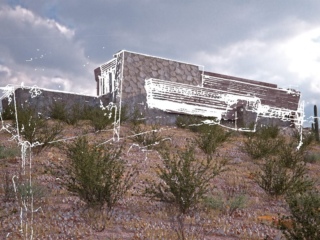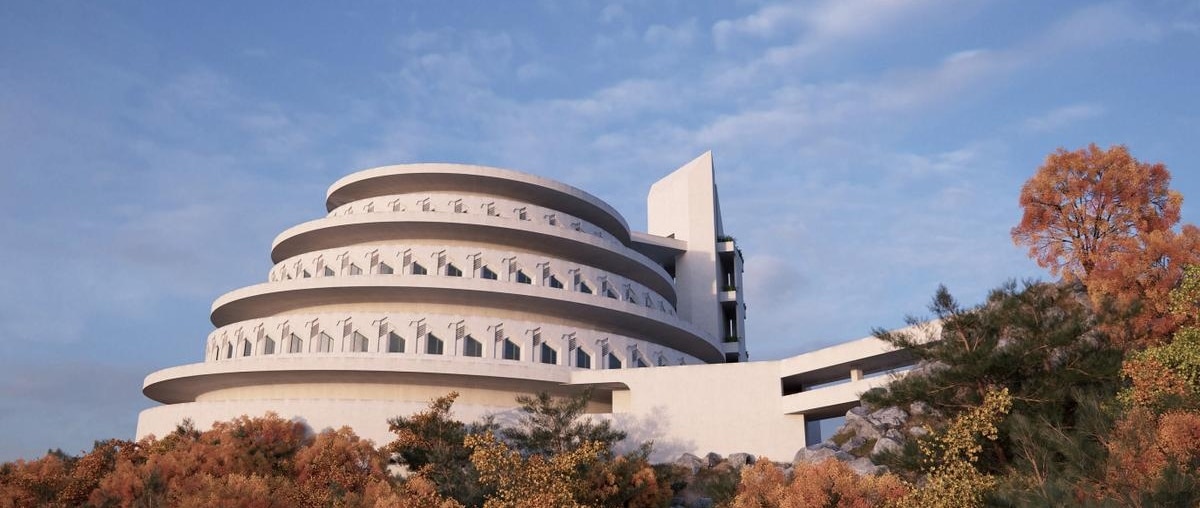
Unbuilt Frank Lloyd Wright Works Come to Life in Quarterly Magazine
Frank Lloyd Wright Foundation | Oct 25, 2018
Spanish architect David Romero envisions what might have been in the fall 2018 issue of the Frank Lloyd Wright Quarterly.
Prolific architect Frank Lloyd Wright created 1,171 architectural works in his lifetime and while 660 remain unbuilt, today Wright enthusiasts have an opportunity to see what might have been thanks to the computer-generated, 3D-images by Spanish architect David Romero.
The Frank Lloyd Wright Foundation enlisted Romero, who uses advanced techniques of 3D representation to take what no longer exists or what never existed, to turn Wright’s designs into striking images that are so highly detailed, they appear to be contemporary photography.
For the upcoming issue of the Frank Lloyd Wright Quarterly magazine, focusing on Wright’s unbuilt projects designed for automobile use, Romero created a series of renderings of the unbuilt Gordon Strong automobile objective, a tourist attraction designed by Wright in 1924 to sit atop Maryland’s Sugarloaf Mountain.
“Wright managed to combine in a single building the sense of something playful with the majesty of an impressive monument,” Romero said of the automobile objective. “It is a pity that it could not be built. If it had, I think it would be one of his most celebrated designs.”
Not unlike planning for present-day structures, Romero’s process for rendering the unbuilt is a result of analyzing materials, the natural environment, historical context and built references. His work relies heavily on photos as references, thinking of renderings as “no more than photographs in a virtual space.”
“While we will never know the true experience of visiting an unbuilt Wright design, these renderings can convey a bit more sense of space and light than the drawings alone,” said Stuart Graff, president and CEO of the Foundation. “There are approximately 660 Wright designs that were never built. As we wonder what might have been if these designs had been realized, Romero’s work gives us a sense of Wright’s innovative genius that we can continue to learn from and be inspired by.”
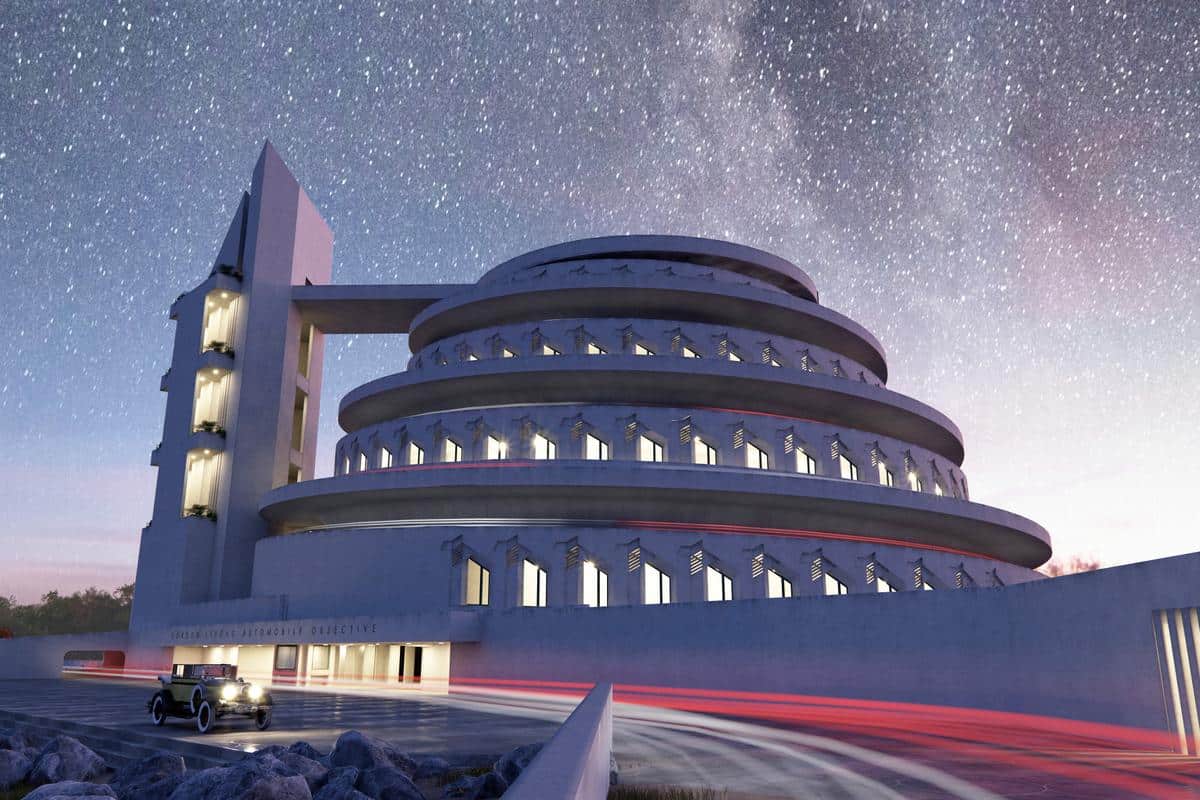
Rendering of the Gordon Strong automobile objective (unbuilt).
For the automobile objective, Romero referenced photographs of the Solomon R. Guggenheim Museum in New York to shape his understanding of how the building might have been realized. Knowing the automobile objective was also meant to serve as a planetarium, Romero needed to capture the importance of the structure at night and gathered nighttime photos of skies filled with stars and cars trailed by an electric glow to help create the setting and convey motion, speed and feeling.
Romero began the meticulous work by importing the plans, sections, elevations and Wright’s actual drawings into AutoCAD to create the base of the structure, and another program called Autodesk 3ds Max, with the RailClone plugin, to create the spiral.
Once Romero built the model of the structure, he then created an environment by researching the scenic area in Maryland known for its striking views and natural beauty. To establish scale and set a scene, he chose cars and multicolored fall trees to accompany the structure. Romero selected automobiles from the 1920s, the decade in which he estimated the structure might have been built.
With the main features of the rendering established, Romero then fine-tuned the details of the building, the textures and materials, considering that they must show wear, imperfections and traces of rain and dirt. He referenced the Guggenheim and chose concrete for the material of the main structure.
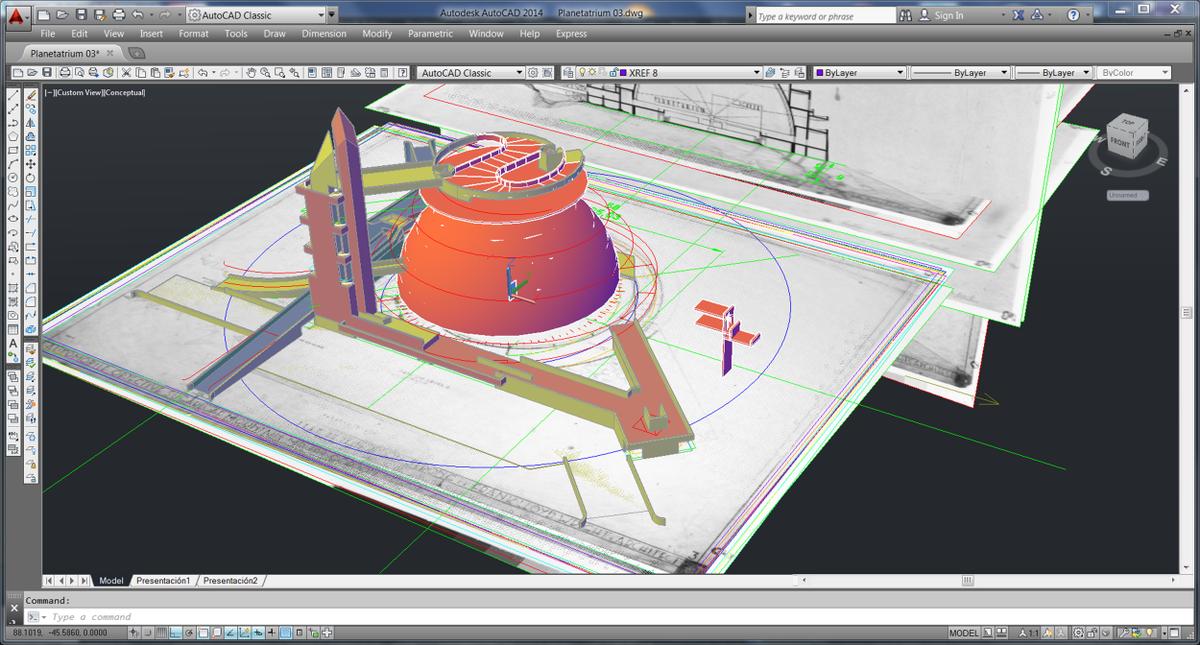
“It is always very thrilling to see the first renderings with textures,” Romero said. “Even if I have an idea in my head of what I want to achieve, when I start to see the first images there is always a moment of discovery and I cannot help but feel like a time traveler.”
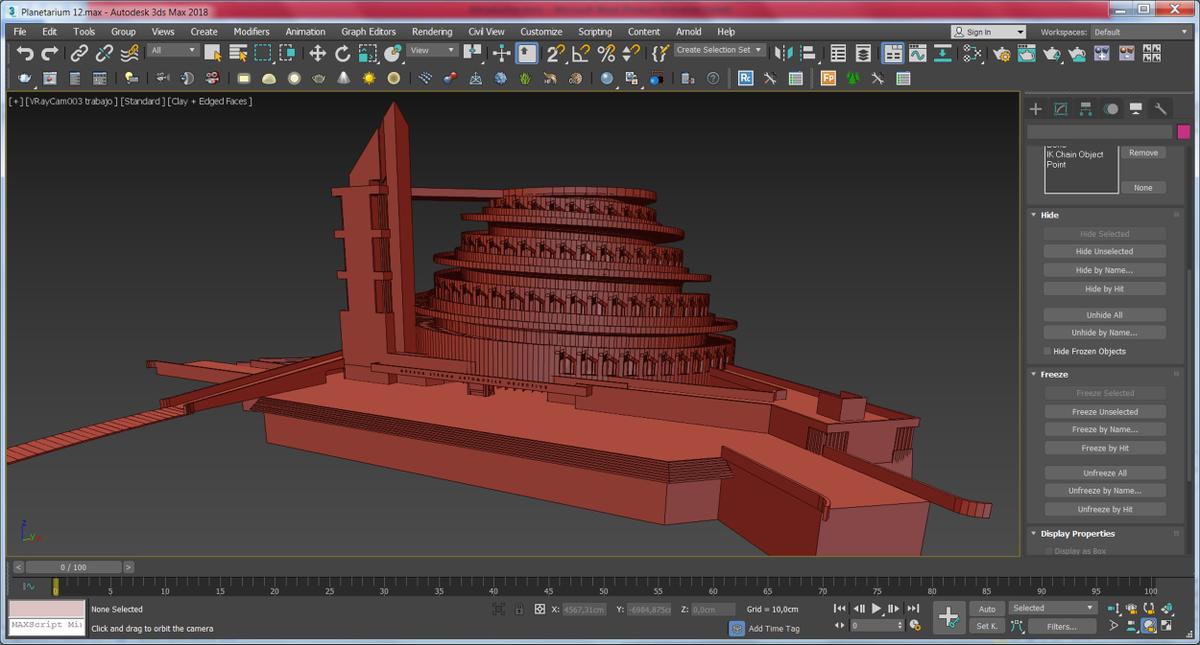
Once Romero added light to the setting using an HDRI photograph, his raw rendering was complete and final adjustments were made in Adobe Photoshop to perfect the image.
“I love the result. The final images look a bit different if we compare them with Wright’s drawings that were always from very high points of view. Now, we can see the design from an individual’s point of view,” Romero said.
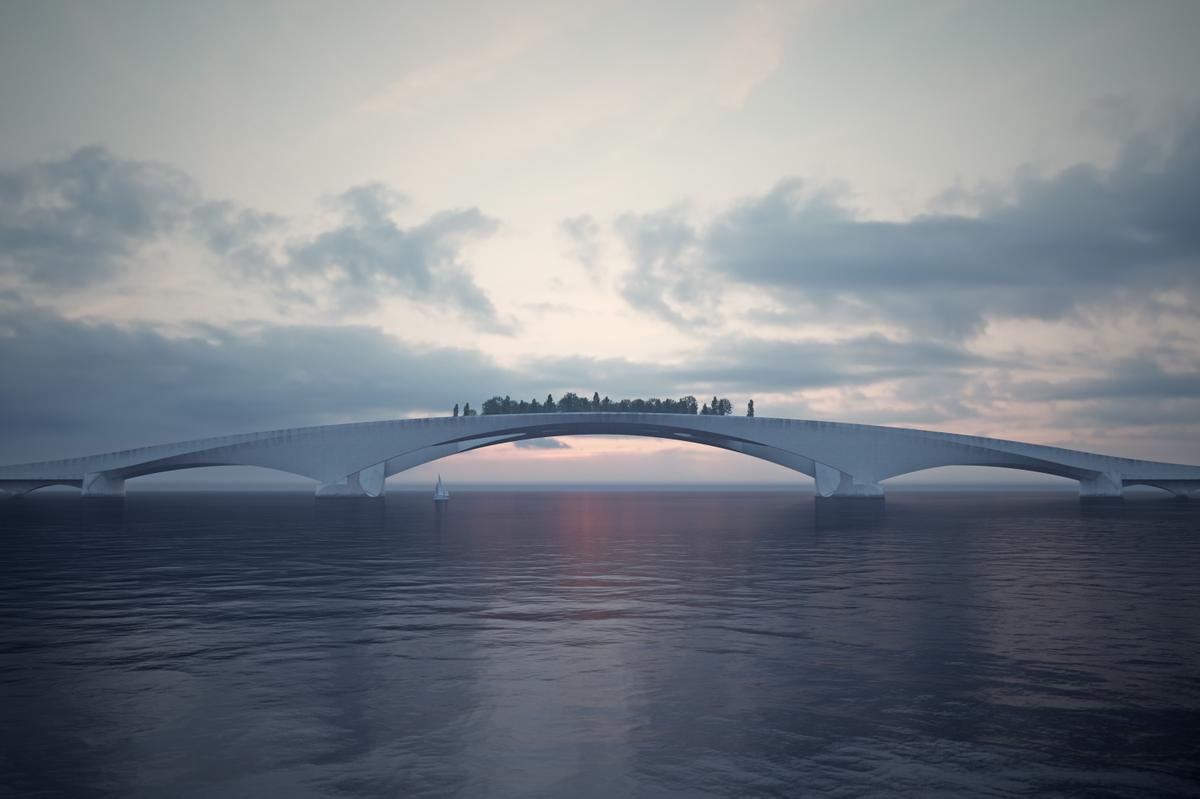
Rendering of the Butterfly Wing Bridge (unbuilt).
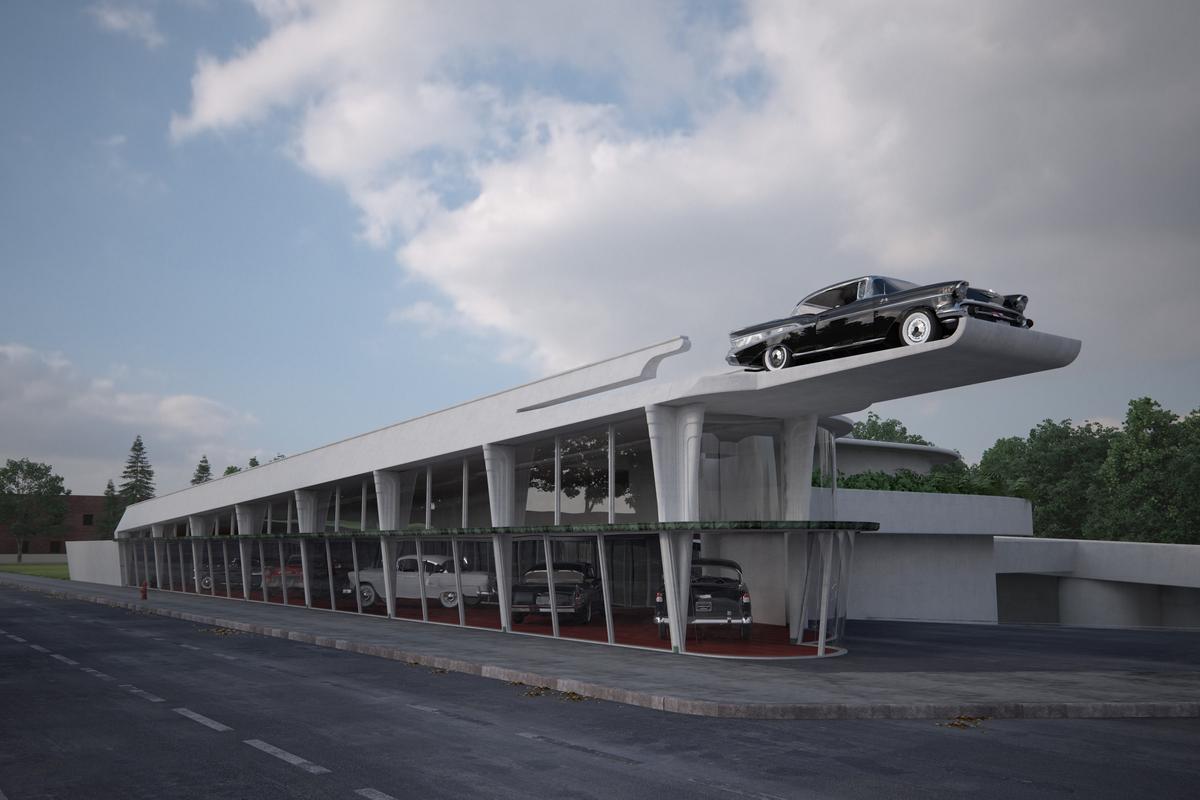
Rendering of the Roy Wetmore Car Repair and Showroom, scheme 1 (unbuilt).
Long before Romero began formally working with the Frank Lloyd Wright Foundation, in 2014 he started a website, Hooked on the Past, where he began creating renderings of designs by his favorite 20th-century architect, Frank Lloyd Wright. His work has garnered significant attention over the years and led to the Foundation’s interest in a collaboration.
Even more never-before-seen renderings of the Gordon Strong automobile objective are featured exclusively in the Quarterly, as well as Romero’s renderings of three other unbuilt works, the Roy Wetmore Car Repair and Showroom, Butterfly Wing Bridge, and Valley National Bank.
SUBSCRIBE TO THE QUARTERLY
To be among the first to see these unbuilt Frank Lloyd Wright designs come to life through Romero’s renderings, subscribe to the Frank Lloyd Wright Quarterly magazine by becoming a member.
Frank Lloyd Wright Foundation members receive the Quarterly as part of their membership benefits. The Quarterly offers readers an innovative look into the past, present, and future of Frank Lloyd Wright’s legacy through thoughtful graphic and written explorations of the legendary architect’s work and the community it has created. Members who join by Dec.1, 2018 will receive the Romero issue.



